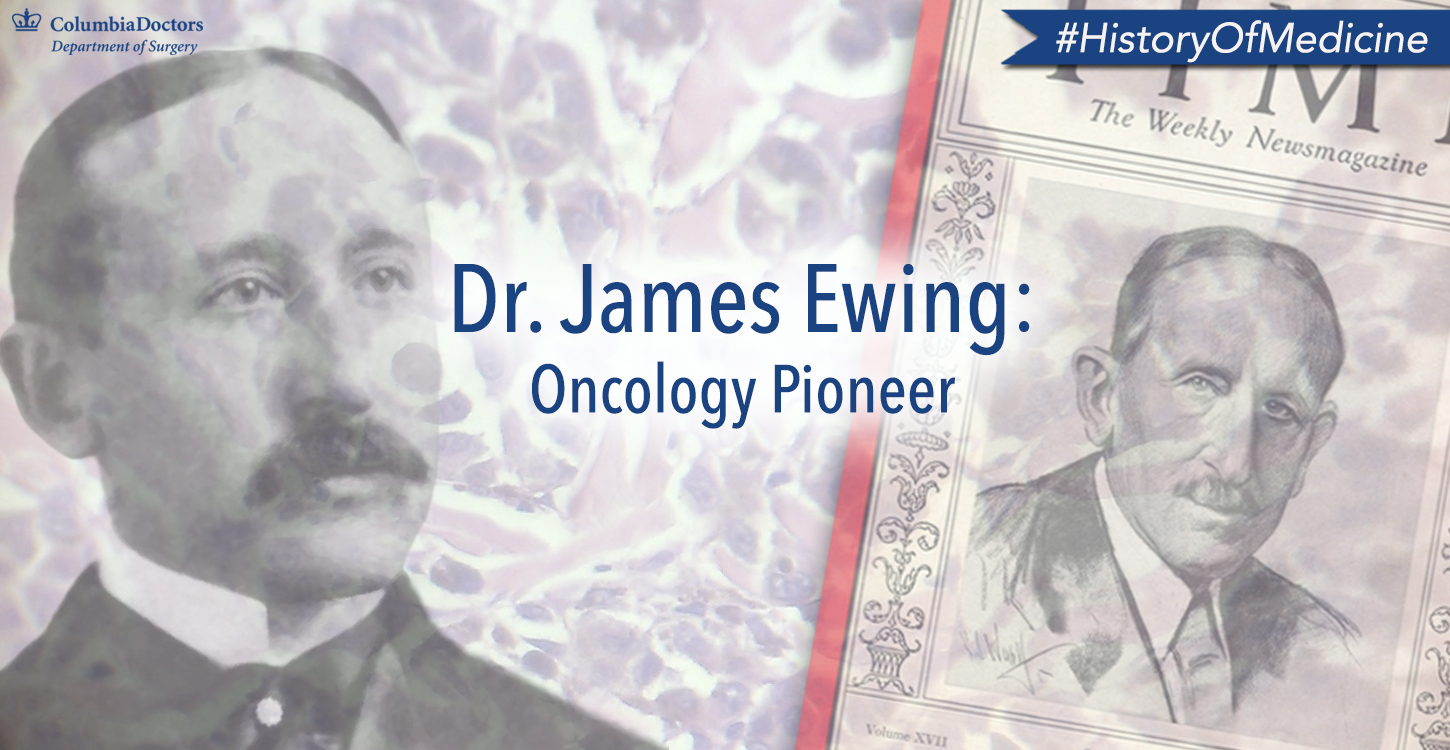One of the many great minds to grace the halls of Columbia in the 20th century was Dr. James Ewing. A cancer pioneer who was the first to describe a tumor that would one day bear his name – the eponymous Ewing Sarcoma – he also formed a society 75 years ago dedicated to finding a cure for cancer.
Ewing studied medicine at Columbia University from 1888 to 1891, and returned to Columbia as an instructor in histology and pathology from 1893 to 1898. Following a brief interval as an Army surgeon, he became the first professor of clinical pathology at the medical college of Cornell University, where he worked for three decades. While there and at Memorial Hospital for Cancer in New York City, Ewing was the first pathologist to conduct in-depth investigation into the features of rare deadly bone tumors. These tumors, usually appearing in the pelvis or legs in young adults, affect just one in a million people.
Following on the heels of Marie Curie’s discovery of radium, mining engineer and industrialist James Douglas donated 3.75 grams of refined radium, putting him in possession of one of the largest amounts of the element in the world. Ewing recognized the huge potential of using radiation therapy to treat cancer, so with Douglas, he founded the National Radium Institute in 1913. In 1919, Ewing published Neoplastic Diseases: A Text-Book on Tumors. This resource was the first authoritative description of the pathology and course of rare bone tumors, but it would become the cornerstone upon which the entire field of oncology was established. He established one of the first funds for cancer research – the Huntington Fund for Cancer Research – and his guidance at the Memorial Hospital led to the creation of what would later become Memorial Sloan Kettering Cancer Center. An interesting side note: MSKCC and Columbia’s Herbert Irving Comprehensive Cancer Center -- two institutions that inherited the legacy of Ewing's research-- are the only two centers in New York City to have the prestigious “Comprehensive Cancer Center” designation by the National Cancer Institute.
The term ‘Ewing Sarcoma’ was first coined in 1928 as a generalized term for a family of tumors that occurred in the bone and soft tissue and it was a huge honor for the man who first described them, but he deserved the recognition.
Throughout his career, Ewing recruited surgeons, pathologists, radiologists, and other clinicians, and insisted that they become versed in multimodal treatment of cancer that included the use of radiation. For this pioneering work, he is remembered as the father of the multidisciplinary treatment of cancer.
In recognition of his leadership and innovations, Time Magazine featured Dr. Ewing on the cover of their January 12, 1931 issue. The physicians he trained became the nation’s first experts in cancer, and the James Ewing Society was established in 1940. Today the society is known by its new name, chosen in 1975 – the Society of Surgical Oncology. Seventy-five years later, SSO continues as the preeminent association for the advancement of cancer surgery worldwide and Dr. James Ewing’s place in the history of medicine will never be forgotten.
Learn more about sarcoma.
Check out other interesting stories in our "History of Medicine" series:
- First Pediatric Heart Transplant
- Assassins, Embroidery, and the Origins of Vascular Surgery
- First Measurement of Blood Pressure
- Woman of Honor
- Ancient Indian Nose Jobs & the Origins of Plastic Surgery
- The Galling Gallbladder
- The Mysterious Appendix
- Our 5 for the New $10
- The Small & Might Parathyroids

